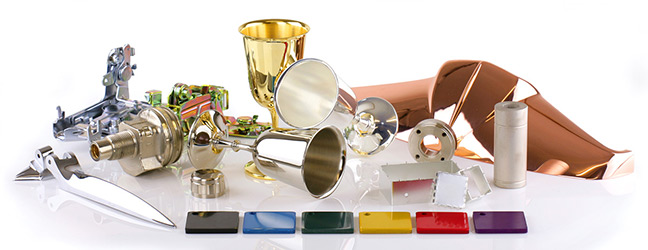A Beginners’ Guide to Electroless Nickel Plating
Electroless nickel plating is a premium and cost-effective metal finishing process, often used in the marine, oil and defence industries. But what is electroless nickel plating and what are the advantages to using this process?
Check out our comprehensive guide to electroless nickel plating below and what it is used for.
What is the Electroless Nickel Plating Process?
Before electroless nickel plating can begin, the material to be treated must be cleaned by a series of chemicals, in order to remove unwanted soils and dirt from the material surface. After each chemical wash, water is used to rinse off any chemicals that adhere to the surface. This is the known as the pre-treatment process. Similar to anodising, the next stage involves dipping the material in a liquid solution.
The process is similar to standard nickel electroplating, the key difference being that this process does not require an electric current to pass through the solution.
- Pre-treatment begins by using chemicals and water to clean chosen material
- The pre-treated material is dipped into a reducing solution (often sodium hypophosphite)
- The chemical reaction between solution and nickel ions causes the metal particles to adhere to the material being treated
Uses for electroless nickel plating
The process is often used for parts and components in the marine, oil and defence industries. This is because electroless nickel plating is very resistant to corrosion and is therefore well suited to environments with harsh chemicals. It also extends the lifetime of plated parts, as the process prevents rust and is extremely durable. As a result, the electroless nickel plated components are suitable for parts that are susceptible to heavy wear.
Applications of electroless nickel plating include:
- Rotors
- Drive shafts
- Fuel rails
- Aerospace components
- Diamond handling surfaces
- Bathroom fixtures
- Door handles
- Mechanical tools
- Hard drive disks
- Printed circuit boards
Advantages of Electroless nickel plating:
- Electroless nickel plating is non-magnetic
- High tolerances with metal deposits resulting in higher quality, smooth finishes
- Very uniform and even thickness when applied
- Excellent corrosion protection
- Process does not require electricity
- No requirement for sophisticated jigs
- Multiple finishes such as matte, semi-bright or bright can be achieved
Disadvantages of Electroless nickel plating:
- Lifespan of chemicals used is limited
- Waste treatment cost is very high
- Electroless nickel plating has porous traits, resulting in inferior metal structure long term
Do you require a specific metal finishing process? Dorsetware provide a range of metal finishing services such as gold electroplating, zinc plating and chrome plating. Feel free to call our friendly team on 01202 677 939, or contact us for a quote.

